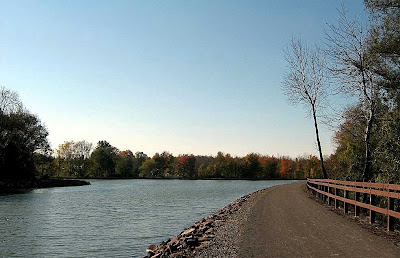 Another year draws to a close! From one hour or one day to the next, often seems to drag by--especially when we're mired in some unpleasant task or situation. But when we think back on precious moments with our family and friends, they slip through our hands like rushing water, even as we try to hold onto them. Perhaps we'll have them abide with us only on the other shore, when--washed clean and all basking in the eternal light of our Savior's love--we meet again to share them in perpetual joy. Such a vision helps us lay aside old cares, and enter on the morrow with renewed hope and confidence.
Another year draws to a close! From one hour or one day to the next, often seems to drag by--especially when we're mired in some unpleasant task or situation. But when we think back on precious moments with our family and friends, they slip through our hands like rushing water, even as we try to hold onto them. Perhaps we'll have them abide with us only on the other shore, when--washed clean and all basking in the eternal light of our Savior's love--we meet again to share them in perpetual joy. Such a vision helps us lay aside old cares, and enter on the morrow with renewed hope and confidence.So, to end this brief chapter called 2010, I'd like to offer you a few minutes' blissful peace in the fine old "closing" hymn God Be With You Till We Meet Again. This is one of my all-time favorites, and one that I'd like sung at my funeral--not to be morbid or anticipate the event! The text was written in 1880 by Congregational minister Jeremiah Eames Rankin (1828-1904), and the music in the same year by William G. Tomer. Rankin explained that the hymn "was written as a Christian good-bye; it was called forth by no person or occasion, but was deliberately composed as a Christian hymn on the basis of the etymology of 'good-bye,' which means 'God be with you.'"
I think this hymn is altogether fitting as a gentle good-bye to the old year and all that was, and all who were, dear in it, and as a bright looking-forward to a new year filled with God's blessings. The rendition in the video below is by the Mormon Tabernacle Choir, and the text follows it (the second stanza is omitted in the video rendition). May this wonderful hymn touch your heart with warmth and peace tonight, and throughout the coming year!
God be with you till we meet again,
By His counsels guide, uphold you,
With His sheep securely fold you,
God be with you till we meet again.
Chorus.
Till we meet, till we meet,
Till we meet at Jesus’ feet;
Till we meet, till we meet,
God be with you till we meet again.
God be with you till we meet again;
'Neath his wings protecting hide you,
Daily manna still provide you:
God be with you till we meet again.
Chorus.
God be with you till we meet again,
When life’s perils thick confound you,
Put His arms unfailing round you,
God be with you till we meet again.
Chorus.
God be with you till we meet again,
Keep love’s banner floating o’er you,
Smite death’s threat’ning wave before you,
God be with you till we meet again.
























































